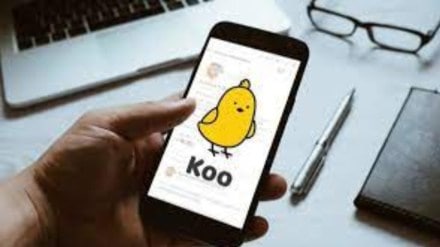Homegrown microblogging platform Koo recently announced that it would allow creators to monetise their content by launching customised subscription plans. Content creators can use the Koo Premium paid service to offer exclusive perks or written, audio, or visual information to users who sign up for such giveaways. As such, “the Koo App acts as an intermediary between the content creator and the user”, says its website. The move comes within weeks of Twitter making a similar announcement — that the platform will allow creators to monetise content using a subscription model.
The rush to woo creators is easy to understand. India is set to have the largest base of social media content creators globally this year, with the number set to cross 100 million, according to a report by influencer marketing firm Zefmo. Will the move help Koo, the second-most used microblogging platform in India, give a tougher fight to global platforms such as YouTube, Instagram and Twitter?
This is perhaps Koo’s biggest bet in the influencer marketing economy in India poised to reach `2,200 crore by 2025. Even though the base of creators is growing, not everyone is able to make money on these platforms. Experts say it is only the top 10% of the influencer community that takes home the lion’s share. Koo had over 50 million users globally as of January this year, compared with Twitter’s 396 million. As of April this year, Instagram had about 1.35 billion active monthly users while YouTube had over 2.5 billion.
Ambika Sharma, founder and MD, Pulp Strategy, says this move will definitely strengthen the platform’s position in the country. “The offering will allow Koo to attract and retain more creators, which will, in turn, attract more users. For all you know, Koo could soon become the go-to platform for microblogging in India and will also give creators more control over their content. It will give them a way to build a closer relationship with their audience,” she observes.
It’s not just Koo, though. Sometime ago, YouTube expanded its monetisation programme to empower those with 500 or more subscribers to earn money leveraging their content, making its monetisation guidelines less stringent from the previous ones, which required at least 1,000 subscribers.
On its part Meta-owned Instagram is taking steps to support the community with on-ground engagements like Creator Day and Meta Meetups, aside from a range of online resources such as Born On Instagram, which currently has over 5 lakh registrations. It also trains them on monetisation models such as Instagram Gifts.
Closer home, short video app Moj, which has a monthly active user base of 160 million in the country and over 50 million creators, launched the Moj for Creators initiative last year, helping creators monetise their work with offerings such as virtual gifting.
Is Koo doing enough to take on the competition? Mansi Gupta, chief business officer at Opraahfx, an influencer marketing company, says, “To compete with other platforms, Koo should explore additional monetisation options like advertising partnerships and sponsored content. Improving content discoverability with effective search algorithms and personalised recommendations is crucial. Ensuring content quality and authenticity verification will enhance credibility. Strategic partnerships with creators and cross-platform integration can also attract a wider audience.”
What will help in all this is the fact that Koo is available in over 20 languages — a good starting point to woo regional content creators and build a presence deep into the country.
